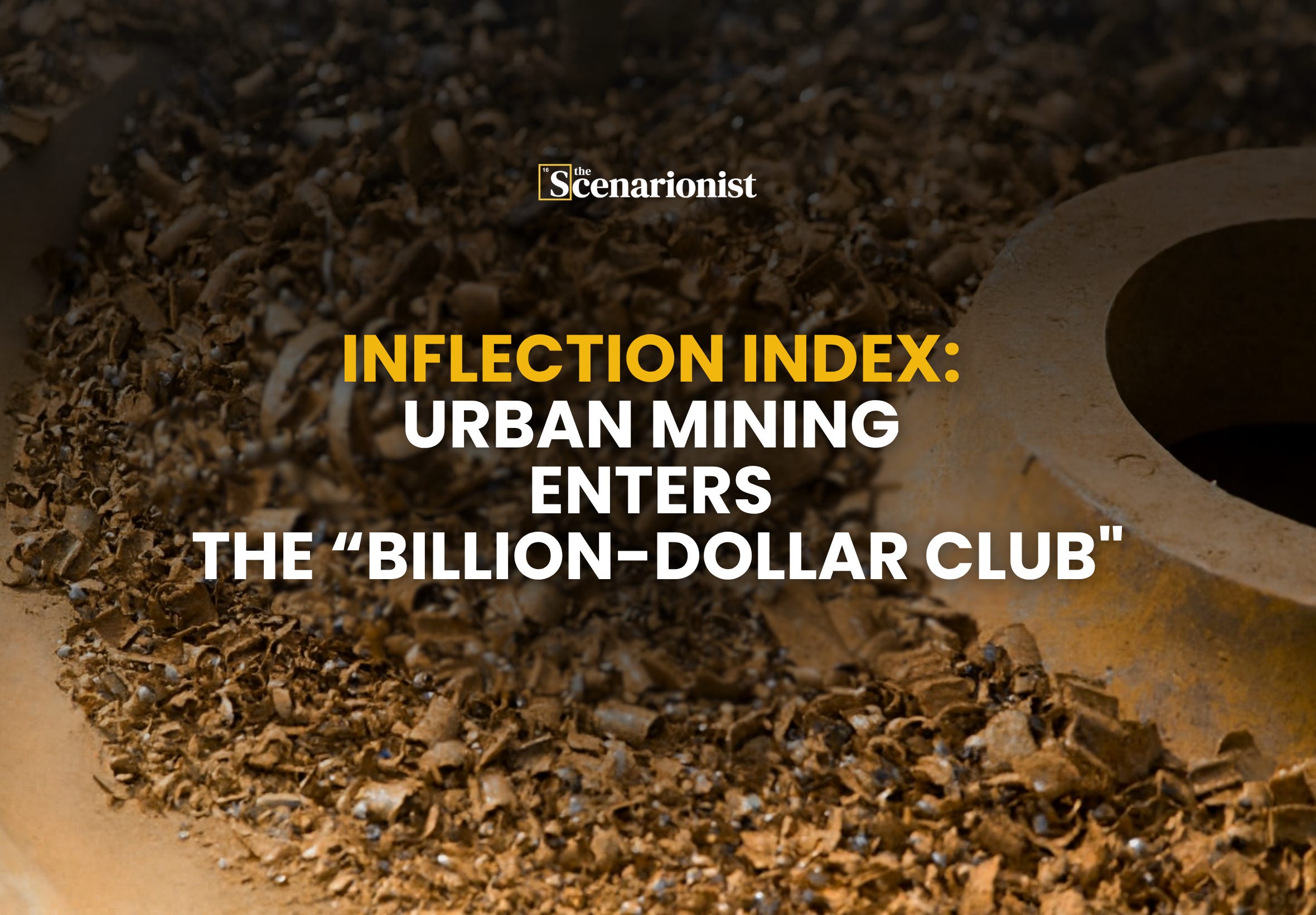Inflection Index: Urban Mining Enters the “Billion-Dollar Club" | The Scenarionist
Rare-earth recycling is on track for a $1B market by 2030: how moats emerge, red flags to spot, and where the alpha sits.
Less than 1% of rare earth metals are currently recycled – but that’s about to change. A perfect storm of tech innovation, geopolitical urgency, and surging demand is turning electronic waste into a $1 billion opportunity by 2030.
1. From Trash to Treasure in the Tech Metal Age
In a world increasingly driven by deep electrification, the “vitamins of modern industry”—rare earth elements (REEs)—are more critical than ever.
Yet these metals (like neodymium, dysprosium, and europium) come with a catch: today, less than 1% of rare earth materials are recycled from end-of-life products [1].
For decades, it was often cheaper to mine fresh REEs in distant quarries than to recover them from our junked smartphones or spent EV motors. That is now changing rapidly. Investors and policymakers are waking up to a massive inflection point: urban mining of rare earths is moving from niche lab experiments to an emerging industry poised to “join the “billion-dollar club” by 2030 [2].
Why now?
Several converging forces are at play:
Demand for REEs is skyrocketing thanks to the electrification, compute, and defense buildout – everything from electric-vehicle traction motors to smartphones and advanced defense systems relies on powerful rare-earth magnets and specialized materials.
At the same time, geopolitical tensions and supply chain chokepoints have exposed the vulnerabilities of over-reliance on mined materials. [3].
Recent years have seen export restrictions and trade war threats around rare earths [4], and as we have seen, in this 2025, China imposed export controls on certain rare earth products, causing real supply shocks – Ford even halted production at a Chicago plant due to a magnet shortage when Chinese shipments were delayed [5].
These events underscored that business as usual (i.e. mining in China and discarding used material) is untenable for tech manufacturers and national security.
Enter rare-earth recycling – once a scientific curiosity, now a strategic imperative. Governments are pouring money and policy support into building a secondary supply. The U.S. Department of Energy announced nearly $1 billion in funding in 2025 to bolster critical minerals mining, processing and recycling domestically [6][7]. The European Union’s new Critical Raw Materials Act, passed in 2023, sets bold targets to recycle 25% of the EU’s rare-earth demand by 2030 [8]. And importantly, innovations in recycling technology are finally making it economically feasible to extract rare earths from discarded electronics, magnets, catalysts and lighting phosphors. The pieces are in place for a recycling revolution.
For venture investors and deep-tech operators, this inflection point presents a “rare” opportunity.
The global rare earth recycling market is forecast to grow from roughly $0.7 billion in 2024 to $1.0 billion by 2030
[2], with some analyses projecting even higher upside (up to ~$1.5B by 2030) as end-market demand accelerates. [11]
In this report, we will dive into the state of rare-earth recycling and why it’s reaching an inflection point now.
We’ll break down the market dynamics driving growth, compare policy tailwinds, and examine the cutting-edge technologies unlocking efficient REE recovery (from advanced hydrometallurgy and ionic liquids to direct magnet-to-magnet recycling). Moreover, we’ll case some startup players who are pioneering this space – companies turning hard disk drives, EV motors, wind turbine magnets, spent catalysts and phosphor powders into goldmines of critical materials. Finally, we’ll discuss the challenges that still loom (technical, economic, and logistical).
By the end, you’ll have a clear picture of how “urban mining” of rare earths is moving from promise to profit – and practical takeaways on where to seize the opportunity.



